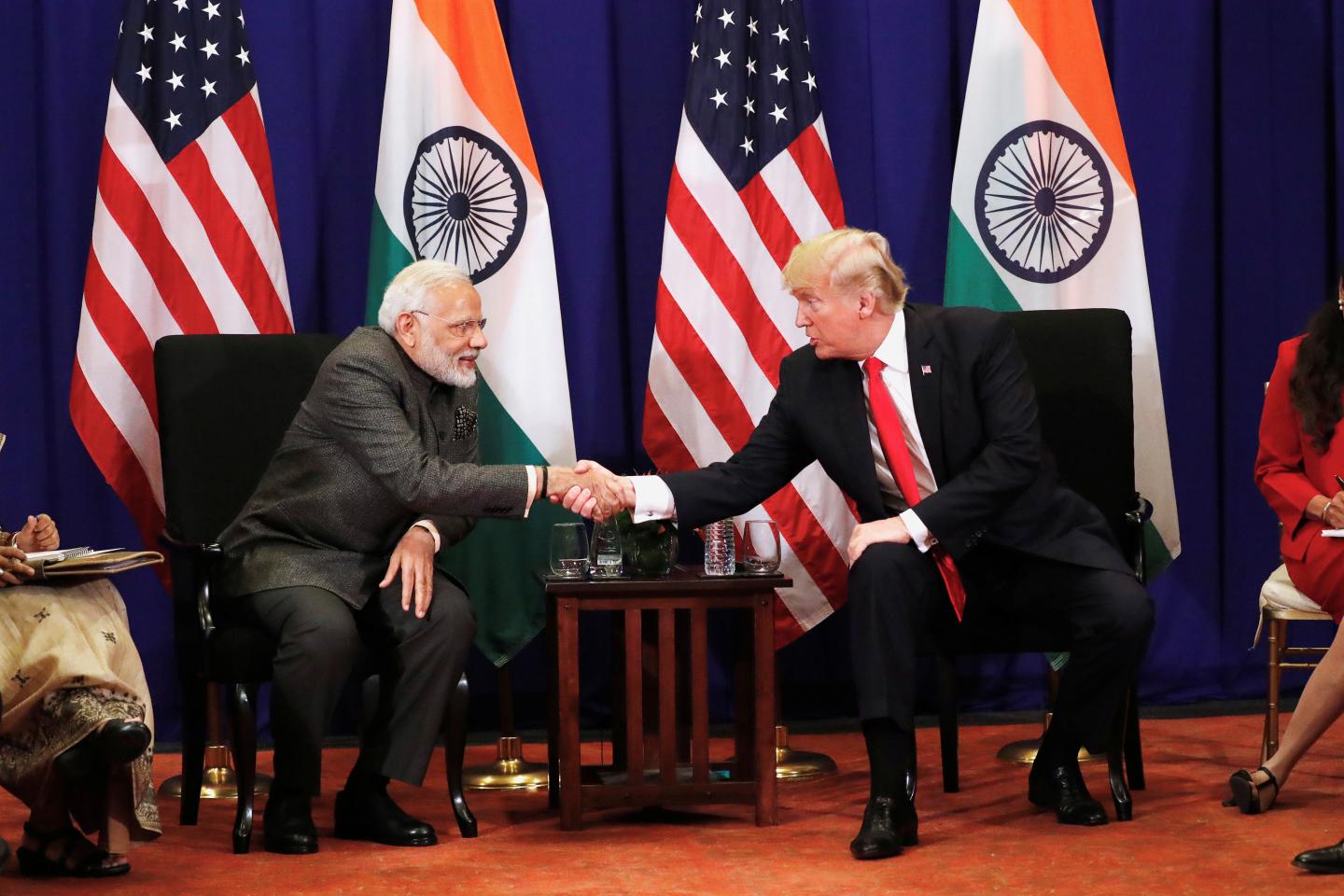Indo-US ties

The US is working to send a delegation to Piyush Goyal’s commerce ministry to figure out how to reduce tariffs that have so irked the US President.
Global trade is currently caught in the vortex of protectionism. No wonder Indo-US trade relation too is caught in war of words. Will it lead to bigger skirmishes or can India look for new opportunities?
US President Donald Trump’s decision to end preferential trade treatment for India under the Generalised System of Preferences (GSP) would impact USD 5.6 billion of Indian exports from June this year.
Why did the US president impose such a decision on India when ties were seemed to be improving between the two biggest democracies in the world? The move initiated in March this year was the latest initiative by the Trump administration to reduce US trade deficits.
Secondly, it wanted to redress what it considers to be unfair trading relationships with other countries.
Thirdly, India alone was not ire of its target. Without any malice both its giant foe-China and its immediate neighbour and friend-Canada were under fire over trade. Besides India, Turkey the other new target in Trump’s trade wars, was the fifth largest beneficiary with USD 1.7 billion in covered import.
Will it impact Indian exports?
As per a study by the Federation of Indian Export Organisations, India’s global merchandise exports for 2018 were USD 324.7 billion, of which USD 51.4 billion were to the US. However, only USD 6.35 billion of exports from India to the US benefited from the GSP scheme. Such exports were covered under 1921 US tariff lines. The US also removed the exemption for India from application of the safeguard measures on crystalline silicon photovoltaic (CSPV) products and large residential washers effective from June 5.
Largest trading partner
The US is the largest trading partner of India replacing China. India has a favourable balance of trade with the US to the tune of USD 19 billion while its trade deficit with China is about USD 57 billion.
India-US bilateral goods and services trade stood at USD 142 billion in 2018, that grew 12.6 pc from USD 126 billion in 2017. The US has also increased crude oil exports to India from 10 million barrels in 2017 to 50 million barrels in 2018.
Not the first threat
This is not the first time when the US has threatened nations over trade. Last year it decided to raise tariffs on aluminium and steel product imports from India, China, South Korea. However, the Modi government chose not to retaliate in the hope that the trade tensions would de-escalate. As a result, India’s steel exports to the US plunged by 49 pc to USD 372 million in 2018. But China has continued to stand up to the US. Also, it has not tried to mollify US as India and continues to buy crude oil from Iran after the US slapped sanctions against on Tehran. India has, however, toed diktat from Washington.
India retaliates
This time when US withdrew the GSP Modi who has stormed back to power for a second time with an overwhelming majority hit back at the US by imposing retaliatory tariffs on 28 American products, ranging from apples, almonds and walnuts to certain chemicals and finished metal products.
But India’s action is just a smidgen. Why? This is because it will impact imports of US goods worth only USD 241 million. However, it is not a big deal when compared with the USD 33.1 billion worth of goods that India imported from the US in 2018. What is surprising is Modi administration has found courage to stand up? But the question is what next?
Interestingly, India’s US trade deficit is a trivial USD 24 billion when compared to a USD 400-billion-trade deficit with China. But President Trump continues to harp that India is tariff king.
Other irritants include India’s purchase of five squadrons of S-400 anti-ballistic missiles from Russia. Alice Wells, the senior bureau official for South and Central Asian Affairs at the US state department expressed concern that such such purchase could limit burgeoning India-US military relations.
Over the next few weeks, the Indo-US relationship is expected to stabilise. The US is working to send a delegation to Piyush Goyal’s commerce ministry to figure out how to reduce tariffs that have so irked the US President. It’s not a big deal. What you put on, you can easily take back.
As the global trade war oscillates on a daily basis what is equally important for India is to look for opportunities. Can India explore enough opportunities from Sino-US trade war? It is estimated that a 10 pc shift in the US imports from China can boost Indian exports by more than 20 pc. Also, will continued trade war between US and China force American business to relocate to India?
For that India needs to make a start. The US is keen to show China that their economy can run without depending entirely on China. India with its area, rapidly growing infrastructure and quality manpower comes closest. India also needs to address the larger question that is of India’s trade liberalisation. Not only US but India’s other major trading partners are quite frustrated, whether it is China, European Union, Asean or Japan over its poor trade liberalisation which is intrinsically linked to protectionist temptations and lack of economic reforms back home. It is time to look for opportunities in the emerging challenges.









